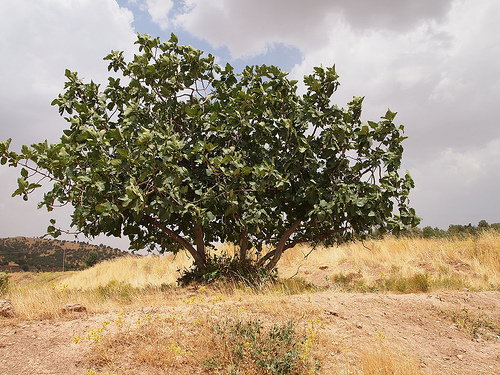We welcome contributions to our session at the AAG Annual meeting in New Orleans, 10-14 April 2018!
Title: The Nature of Peace – links between the natural environment and post-conflict societies
Organizers: Torsten Krause, Andrea Nardi and Lina Eklund (Lund University)
Sponsors: The Pufendorf Institute for Advanced Studies
Please send abstract (max. 300 words) by October 25 to the following email addresses: Torsten.krause@lucsus.lu.se & Andrea.nardi@keg.lu.se
With warm regards
Torsten, Andrea & Lina
—-
Description of session:
In a situation of armed conflict, environmental protection concerns are usually not high on the agenda. During conflict, natural resources are often extracted in an illegal and informal manner because of a lack of oversight from a weak state engaged in war or because of various groups (e.g., political or ethnic) battling for access to, and control over, resources and lands in order to enrich themselves and finance their activities. Conversely, notwithstanding the often-devastating social consequences, armed conflicts may also provide an unintended protection for ecosystems, such as forests (McNeely 2003, Burgess et al. 2015). This is largely due to the lack of infrastructure construction and other external investments in rural areas during the armed conflict because of security concerns (Sanchez-Cuervo and Aide 2013). In Sierra Leone, a country ravaged by civil war for many years, deforestation was substantially lower than in neighboring countries as a result of the armed conflict (Burgess et al. 2015). Similarly, Colombia has a relatively low deforestation rate compared to other countries in South America (FAO 2012). However, this odd form of protection can quickly disappear when armed conflicts end and make way for reconciliation and transition to peace.
This session proposes to scrutinize post-conflict peacebuilding and reconstructions processes that take place after the termination of an internal armed conflict. Particularly, the focus will be on the links between post-conflict developments and the effects on the natural environment, natural resources management, and, more broadly, environmental justice.
We seek contributions to the following questions:
How does a transition from armed conflict to peace impact the natural environment?
And what (negative and/or positive) consequences can these impacts have for various social groups?
Empirical evidence from around the world has shown that post-conflict reconstruction efforts often focus on the short-term and urgent needs of societies transitioning to peace. These processes, however, often fail to consider the root causes of the conflict and to integrate factors, such as the management of natural resources, that will contribute to a transition to durable peace and sustainable development (Krampe, 2016; Matthew, 2014). It is therefore of key importance to investigate if peace also brings environmental justice in the long term. For instance, the end of the civil war in Cambodia opened the doors for large-scale natural resources exploitation and infrastructure development, often at the indirect detriment of people who are dependent on natural resources to sustain their livelihoods (Le Billon 2000, Milne et al. 2015). Therefore, what is frequently framed as progress and development by governments and investors often leads to the exacerbation of environmental injustices (Bernstein 2001). In South Africa, an already water-scarce country, addressing the legacies of apartheid also involves tackling unequal access to natural resources such as land, water and electricity. In short, land restitution, social and environmental justice, go together during post-conflict situations.
Despite the above mentioned, there is a disconnection between natural resources management and the post-conflict/peacebuilding research communities. Not enough is known about when, how and why environmental factors can work for peace, and vice versa, how peace processes can contribute to environmental sustainability (Altpeter, 2016; Matthew, 2014).
References:
- Bernstein, S. (2001). The Compromise of Liberal Environmentalism. New York, Columbia University Press.
- Burgess, R., E. Miguel and C. Stanton (2015). “War and deforestation in Sierra Leone.” Environmental Research Letters 10(9).
- FAO (2012). State of the World’s Forest 2012. Rome, Food and Agriculture Organization of the United Nations.
- Le Billon, P. (2000). “The political ecology of transition in Cambodia 1989-1999: War, peace and forest exploitation.” Development and Change31(4): 785-805.
- McNeely, J. A. (2003). “Conserving forest biodiversity in times of violent conflict.” Oryx 37(2): 142-152.
- Milne, S., P. Kimchoeun and M. Sullivan (2015). Shackled to nature? The post-conflict state and its symbiotic relationship with natural resources. Conservation and Development in Cambodia: Exploring frontiers of change in nature, state and society: 28-50.
- Sanchez-Cuervo, A. M. and T. M. Aide (2013). “Consequences of the Armed Conflict, Forced Human Displacement, and Land Abandonment on Forest Cover Change in Colombia: A Multi-scaled Analysis.” Ecosystems 16(6): 1052-1070.

